National Forests in Pakistan
Forests are a natural asset to the country. They are more than a large area with trees growing together without human intervention. The Forests form a complex part of an ecosystem and are home to uncountable species of plants and animals. They clean the air in the atmosphere, adjust the water cycle, and contribute to the country’s scenery.
Less than 6 percent of the land in Pakistan is covered with forests. The low precipitation in the country owes to such a small cover and prevents its growth, but the growing population has caused it to clear them even more.
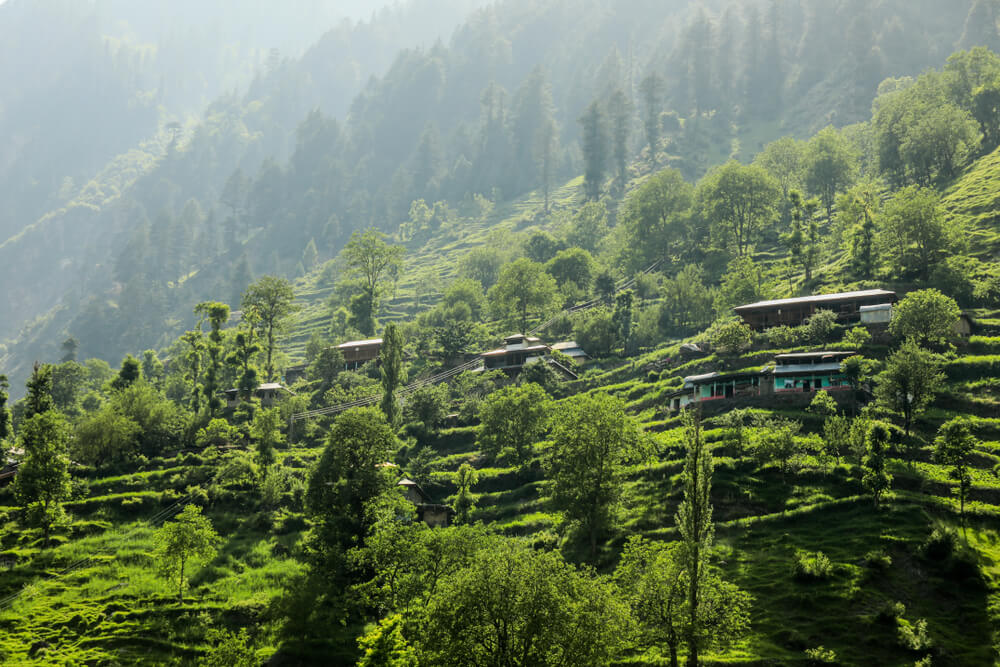
Woodlands in Pakistan are an excellent resource for tourism. They are one of the most beautiful places on the earth and generate employment and revenue from tourists visiting these heavenly places.
The deficiency of green areas in the country is contributing to the extinction of wildlife species and natural disasters and playing its role in the increasing temperatures of the earth. It further jeopardizes many people’s lives and livelihoods, and live stocks.
Types of Forests in Pakistan
Pakistan has a diverse topography and a variety of landscapes. The vegetation differs due to the factors that encourage their growth. From high up in the mountains to the plain and ending in the Arabian sea, the types of forests change with their unique characteristics. Below are some of the common types of jungles in Pakistan.
Alpine Forests
Chitral, Dir, Swat, and Gilgit are areas where Alpine forests grew. They are located on the Himalayan range at high altitudes of around 3,350m, where rain is expected. These forests grow in areas that almost reach the snowline. The most common species of trees found in these woods are abies spectabilis, birch, and Bhuj.
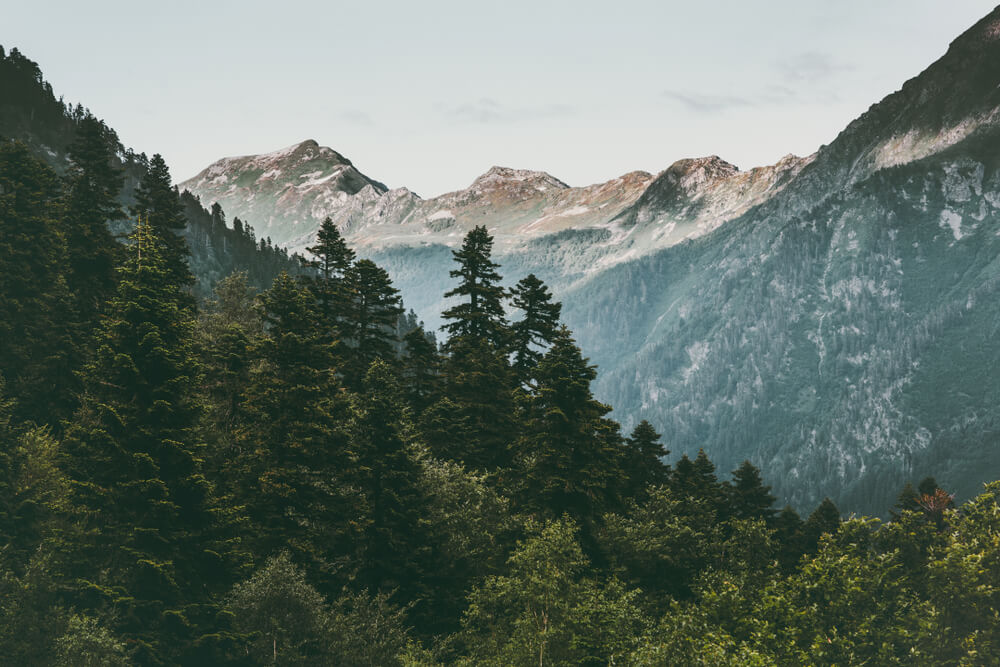
Alpine forests are further divided into sub-Alpine and alpine scrub. The most common use of alpine forests is for fuel or for burning to keep warm or cook.
Coniferous Forests
Coniferous forests grow at altitudes from 1000m to 4000m. In KPK, they are found in Chitral, Swat, Upper Dir, Lower Dir, Mansehra, and Malakand districts and Azad Kashmir, Rawalpindi in Punjab, and some areas of Balochistan. Pakistan’s most common coniferous trees include Pindrow Fir, Morinda Spruce, deodar, blue pine, and Chir pine. Chilgoza pine and Juniper are located in Balochistan.
Coniferous trees are one of the most common trees found in the country. Conifers provide softwood timber used primarily in the region for building and other general purposes. Countless species of birds inhabit them, and they clean the environment by taking in Carbon Dioxide. Coniferous trees are widely used for medicinal purposes, especially anti-cancer drugs. The large amounts in which these trees are used are endangering these trees, and efforts are carried out for the afforestation of Conifers in the northern area of Pakistan.
Tropical Thorn Forests
Tropical Thorn Forests breed where rainfall is scarce. Plants resemble desert vegetation with armed thorns and spikes in these arid and semi-arid areas. These unique characteristics of plants prevent them from precipitation of water and preserve moisture.
Tropical Thorn Forests cover almost all of the Indus plain. It is also present in the Thal and Thar deserts of Cholistan. Rainfall is scarce. Usually, less than 70mm in the west, plants of shorter lengths are found.
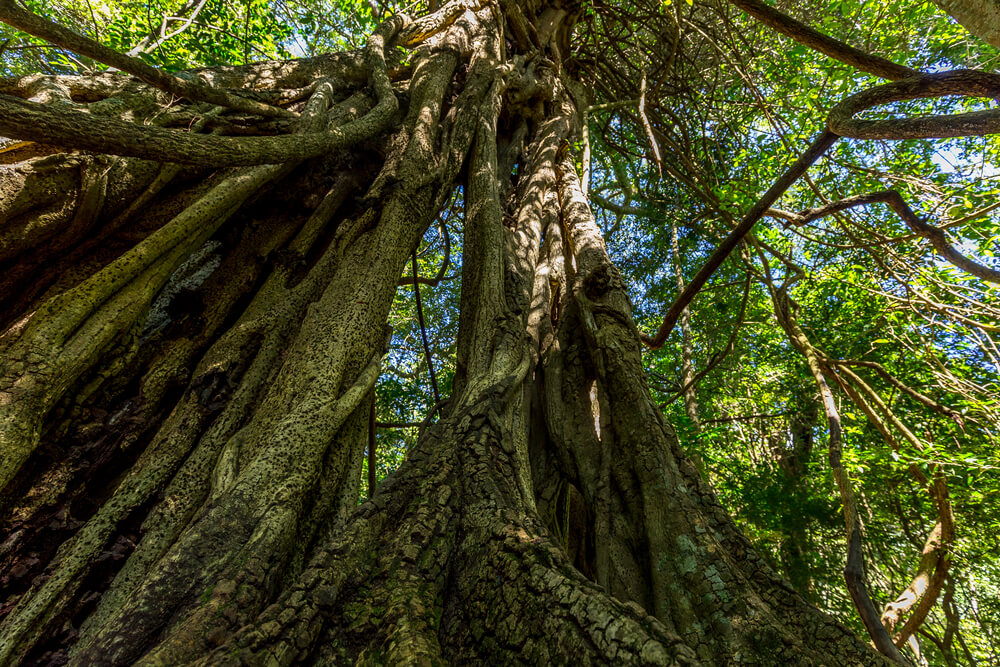
These plants grow 6 to 10 meters in height and have spikes in place of leaves. They are an example of tropical and Subtropical forests. Thorns protect plants from animals. Their long roots take in water from the water table down below.
The plants found in these regions are Acacia, cacti, euphorbias, neem, babul, and wild palms. Natives in these areas use plants to feed their livestock and provide wood for sheds and fuel. They are also used to make medicines and treat certain diseases.
Sub-Tropical Scrub Forests
The sub-tropical scrub forests are grown in Attock, Rawalpindi, Islamabad, Jhelum, and Gujrat regions in Punjab, Mansehra, Abbottabad, and Mardan, Peshawar, and Kohat regions of Khyber Pakhtunkhwa. They grow in altitudes of around 1,000 m.
Vegetation in these forests consists of short trees. They grow a canopy on the top or spread out, only a few feet tall. Sub-tropical shrubs and trees are primarily thorny but stay evergreen.
Some have small leaves, while some are succulents.
Plants that belong to the sub-tropical forests include olive trees, acacia Modesta and Dodonaea. These trees have small branches and are usually used by animals for grazing or burnt for fuel.
Riverine Forests
Riverine Forests are also known as Bela or Kacho Forests.
They cover a massive area of 175702.03 acres. They grow in patches alongside the Indus river. They can be found in Thatta, Hyderabad, Dadu, Larkana, Nauushero Feroze, Nawabshah, Khairpiy, Sukkhus, Shikarput, Ghotiki, and Jacobabad districts in Sindh.
Riverine woodlands were considered “Reserved Forests” under the Forests act of 1927. They provide rich, fertile soil that encourages the growth of crops. Depending on the kind, ages 6 to 40 years are a source of fuel wood and other uses in homes or industries. They provide pit props for mines and support biodiversity. They absorb carbon from the atmosphere and stop soil erosion, preserving agricultural land fertility.
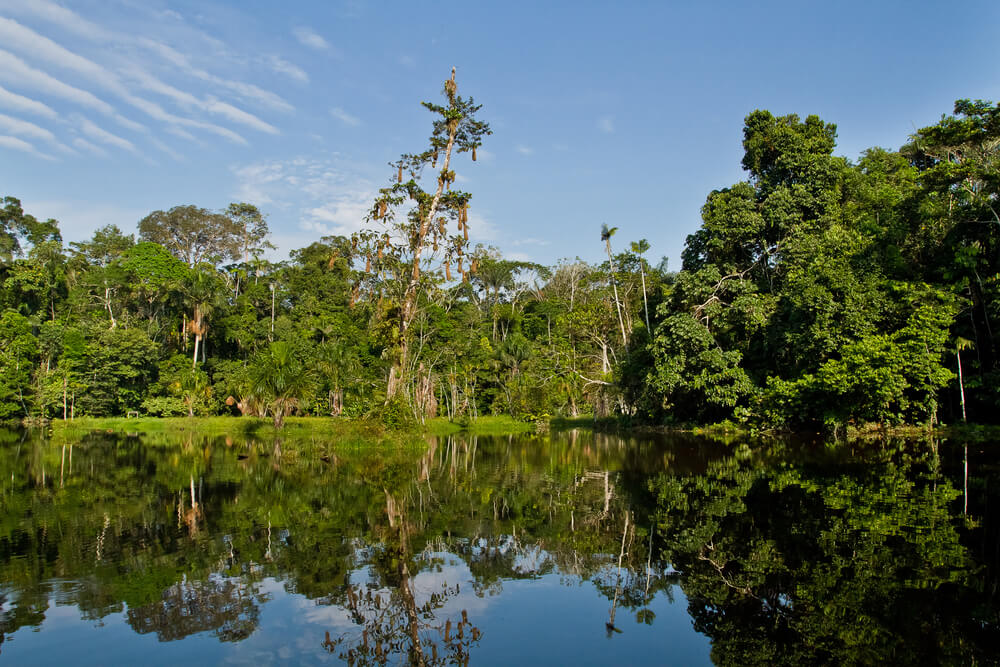
The growth of these forests relies on the flooding of the Indus River. Since recent years water has been held upwards in dams and barrages, which slows down the flow of water and prevents inundation which declining these forests while the droughts have worsened the circumstances.
Preventive measures have been taken for the survival of these forests. Artificial irrigation systems are installed, such as tube wells and planting certain species that may survive in less water.
Trees that are grown in riverine forests are Prosopis, cineraria, Salvadora Persia, and others.
Mangrove Forests
Mangrove forests are spread along the coastal line of Sindh and Balochistan. They breed in salty seawater. Pakistan has one of the top ten mangrove forests in the world.
Four types of mangrove trees grow in Indus Delta.
Mangrove forests are located alongside Milani Hor, Kalmat Hor, and Gwadar bay. They contribute to marine life in many ways despite being in small quantities along the coast. The roots of mangroves are ideal breeding grounds for many fishes, including jellyfish, shrimps, crabs, sponges, etc. The young ones live under the mangroves until they mature, after which they make their way into the open sea.
The marine animals depend on the food webs sourced from the mangroves. Crabs and shrimps scavenge in the squashy mud below the roots of these coastal swamps.
Mangrove forests are considered endangered around the world due to many factors. Deforestation to build new facilities along the coast is one of the biggest reasons for its clearance. The large amounts of fish caught under the sea and pollution contribute to why mangroves are in danger.
Preventive measures are taken to preserve this natural asset. Afforestation has been carried out in large areas, and the Pakistan navy has rehabilitated these coastal swamps.
Four Main Forests in Pakistan
The area covered with forests in Pakistan is around 1687 thousand ha. Deforestation has caused the forests to decline, but the government and other NGOs are taking steps to plant more trees for a greener future. Some central forests in Pakistan are discussed below.
Mushkin Forest Nursery
Mushkin Forest Nursery is situated in Gilgit Baltistan at the height of over 8000 feet. The area of Astore is famous for its wide variety of plants for different herbal and medicinal uses. Twenty-six species of plants were explored as folk medicine; some are under threat of extinction. The forest has beautiful plants and trees and is an Alpine forest where trees such as birch and Bhuj grow.

Mushkin Forest had faced some illegal deforestation. Trees were cut down for Timber and other purposes. Later, the government of Pakistan restored it by planting trees and implying strict laws to conserve nature.
Ziarat Juniper Forest
Ziarat Juniper Forest is located in Balochistan, distributed over the mountains of Ziarat and Zarghoon. The forest envelopes an enormous area of 110,000 ha.
The region’s weather conditions are warm and semi-arid, and the area receives a modest amount of rainfall in summers and winters, which has resulted in the growth of many trees and plants. The snow covers the mountains from November to April.
The Ziarat forest has living trees that are 5000 to 7000 years old and are called living forests. Most of the trees grow on steep slopes and rough ridges of the mountains. Types of trees include Afghan ash, wild pistachio, wild almond, Makhi, Surai, and Zralg.
Most of the plants that grow in these woods are used to treat diseases by the locals. The wood is used to burn. The forest prevents excessive evaporation of water resources that provides them employment.
A large variety of animals inhabit the forest in Ziarat, like Sulaiman markhor, Asian black bear, wolves, golden jackal, and Afghan pika, and birds like chukar, mistle thrush, Black-throated thrush, stream laughing thrush, rufous-naped tit, and bar-tailed treecreeper.
The Juniper trees grow at a slow rate but have a long life. They nurture in a semi-arid climate and survive the region’s cold winters. Natives and other people have been cutting them down for commercial uses and to obtain Timber. Along with the climatic changes, overgrazing by livestock is decreasing the rare flora in the country.
Activists in the province have declared the core area a biosphere reserve where cutting trees is prohibited.
Mushkpuri Top Forest
Mushkpuri Top Forest is located in Nathia Gali, a famous hill station in the northern area of Pakistan at an altitude of 9,200 feet. One of the most serene places with beautiful scenic views, this forest attracts many visitors annually.
Horses can be rented or go by jeep to reach this heavenly place. It is a kind of coniferous forest. The forest is covered with conifer trees that shelter many different types of birds and monkeys.
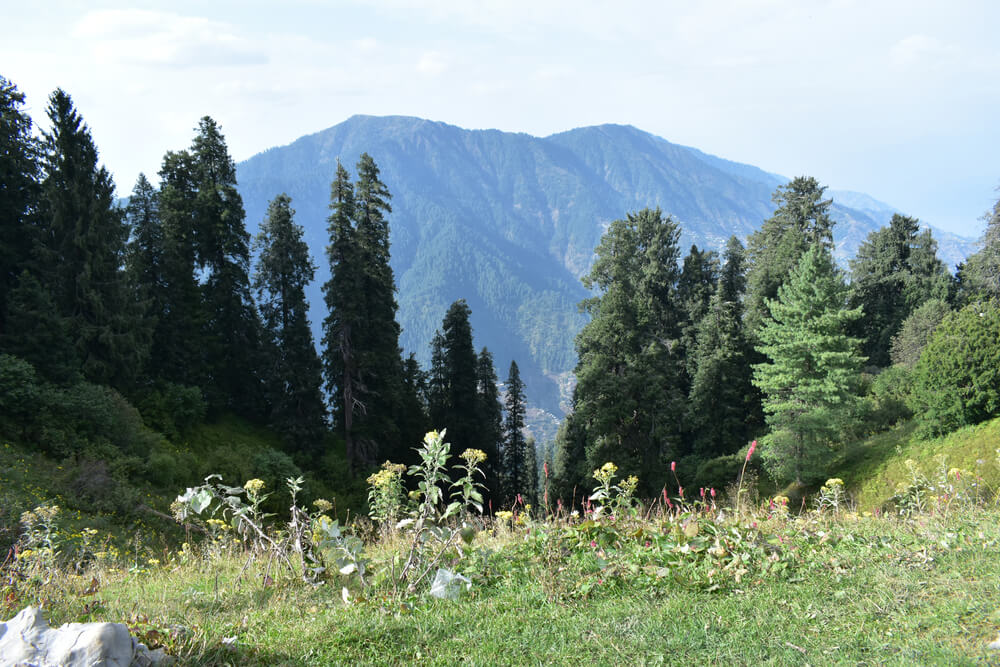
Recently, the area has been developed for tourists, and many trees have been cleared to make rest houses and roads to connect the site to other cities causing deforestation. The cutting of trees disturbs the scenic beauty along with the wild animals living there.
Khyber Pakhtunkhwa government has taken steps to plant trees to avoid damage. The area has started to recover, but it needs to be maintained.
Changa Manga Forest
Changa Manga is an artificial forest created to preserve flora and fauna in the city of Lahore. It has the attribute of being the largest manufactured forest in the world but has been through the illegal cutting of trees.
The forest resides many wild animals and insects and is a fundamental wildlife reserve of Pakistan. The British began planting in the forest in 1866 to grow trees to provide wood to power the train engines. Initially, the land was burnt to eliminate the unwanted wild vegetation, and then Sheesham and white mulberry were planted. After the plantation drive turned successful, the land soon became a vital Timber source for wood industries.
Changa Manga forest has reserves for endangered Asiatic vultures, hog deer, Indian peafowl, golden jackal, mouflon, nilgai, and wild boar.
To safeguard nature, steps have been taken by the government and activists. Cutting trees is strictly prohibited. The water scarcity has deterred the growth, but the efforts have resulted in saving the forests and keeping are alive.
We are losing the greens that sustain our health and living. Protection of the forests is imperative to slow down climate change and its effects. The upcoming generations will have to pay the price for current deforestation activities.
We must plant more trees to save our country and this planet. The trees clean the air and provide food, animal shelter, etc. Restoration of woodlands is becoming urgent in our country and the world.
Importance of Forests in Pakistan
Forest plays a vital role in the economic development of the country. Sadly, Pakistan has a minimal area covered by forests. For a healthy environment and economic development, a country must have at least 20 to 30% of its total land area covered by them; however, Pakistan only has 4.5% of land covered with dense trees. Huge tree plantations are essential because they can be used for many purposes.
A great source of raw material
Forest provides a great source of raw material that can be used in many industries like furniture, paper, and sports goods. Hence, they are significant for the industrial development of the country.
Forest adds to the foreign exchange.
Resources from forests like Timber, honey, and tree oil can be exported to other countries, generating a good amount of exchange essential for the country’s economic development.
Climatic importance
As science has proved, forests play a crucial role in maintaining a healthy climatic environment by producing enough Oxygen and absorbing Carbon dioxide. Compared to a barren metropolitan area, you can quickly feel the difference and calm climatic conditions of and lined with healthy plants.
Increased tourism
The existence of forests also increases tourism in the country. Green patches attract tourists because of the serenity and calmness created by the trees, shrubs, and bushes.
Animal and bird shelter
Forests are also a perfect shelter for birds and animals, especially during the life of tigers, peacocks, deer, and other such animals.
Conservation of forests
Factors like soil composition, landform, and climate influence it. Each type of forest, like coniferous evergreen or deciduous, has its own environmental, ecological, and socio-economic uniqueness and importance. It is estimated that about 1.4 million different types of plants and animal species thrive in ecosystems of forests and rangeland. They are also rich in biological resources, home to half of the vertebrates on earth and almost 90% of the world’s total species. Due to these factors, it is essential to ensure the conservation of forests in every country, including Pakistan. There should be buffer zones of natural forests and protected Areas where hunting and not allowed. Not only this, but such areas should also be protected from excessive recreation and tourism to protect the environment.
Deforestation in Pakistan
There are numerous reasons behind Rapid deforestation in Pakistan. The most prominent ones include poverty, overgrazing, lack of awareness, extensive cutting of trees, and Rapid urbanization. Trees are being used as a source of fuel, paper, and fiber. Another behind deforestation in Pakistan is the timber Mafia which cuts the word and imports it to other countries. It is estimated that Pakistan loses 27000 hectares of forest area annually, which is why the government is now under a green emergency state. In 2022 alone, 27 Kha of land was burnt, causing severe damage to the environment and adding to global warming.
Government Efforts to stop deforestation
The government is trying its best to conserve the country’s forest reserves. In 2019 the PTI government launched a 10 billion trees Tsunami program. Its phase one was to run till 2023 and aims to restore 350000 hectares of forest and degraded land to make it more beneficial for economic development and create a healthier environment.
FAQs
Which is the largest forest in Pakistan?
Forests cover only 4.5% of the total land area of the country. Changa Manga is the largest forest area in Pakistan, covering about 12,515 acres of land.
How many forests are in Pakistan?
They are two forest zones in Pakistan called the upper and lower zones. The total area covered by forests is about 4.8 percent.
